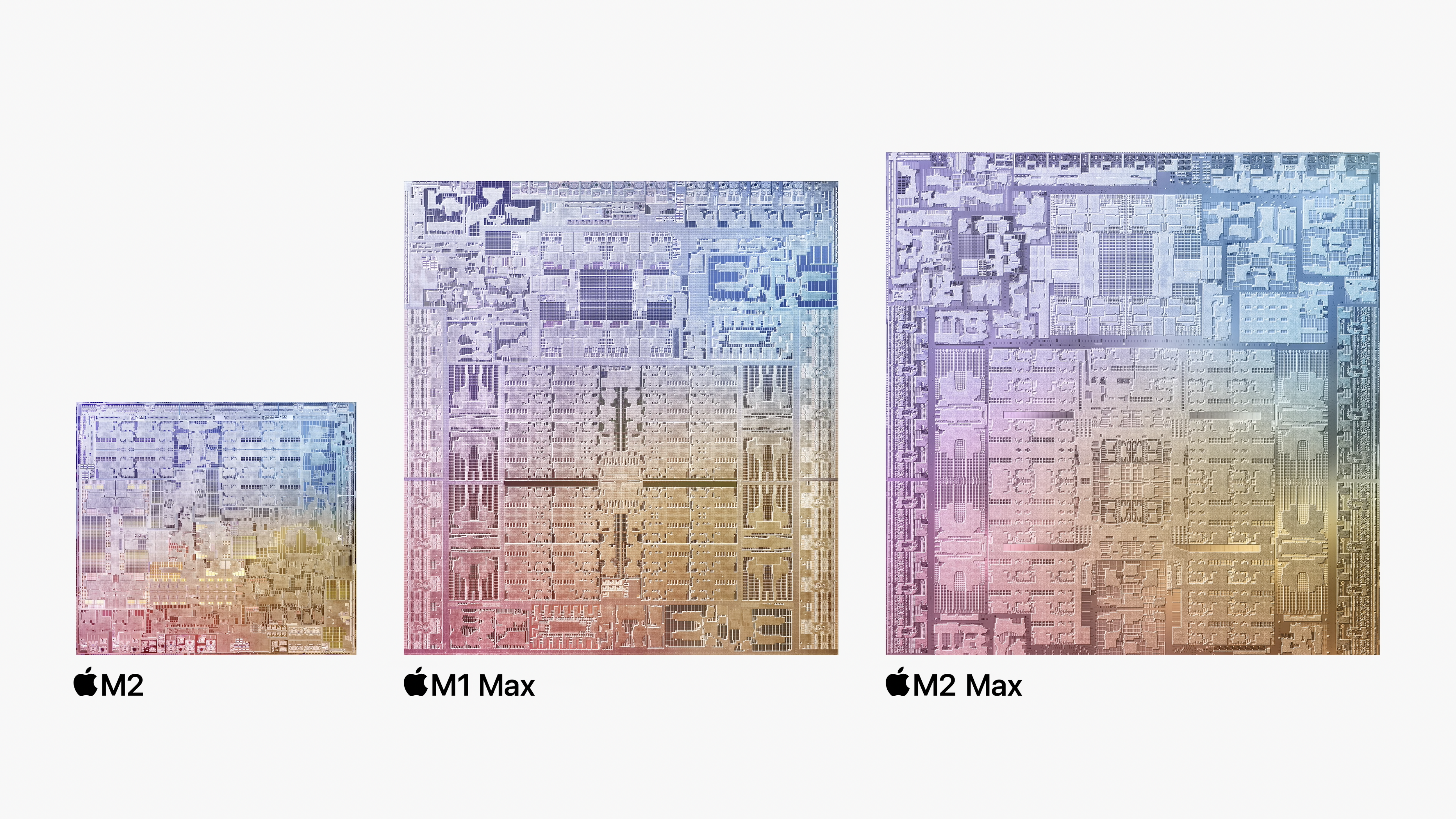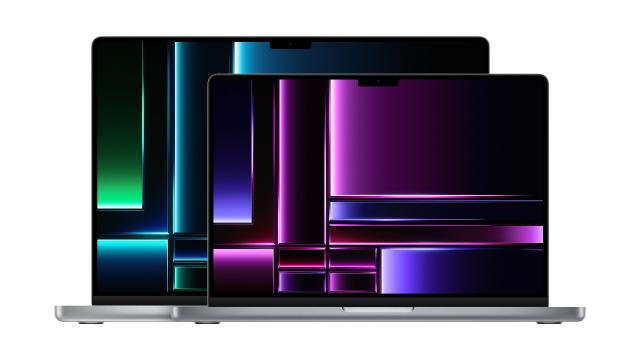When Apple refreshed the MacBook Pro line with the M1 Pro and M1 Max models in the fall of 2021, I told you you didn’t need them. The design was great, MagSafe was back, and the upgraded M1 chips were beasts, but the machines were overkill for the average consumer. And the same holds true today for the new M2 Pro laptops Apple just dropped. I’m sorry to say you still don’t need a new MacBook Pro.
What’s new with the 2023 MacBook Pros
At first glance, you probably wouldn’t be able to tell Apple dropped new MacBook Pros at all. Certainly these new MacBooks look identical to the previous generation, so you can’t buy one for the bragging rights.
What’s new is only visible on the inside: These new MacBook Pros sport Apple’s latest M2 Pro and M2 Max chipsets, which build on the performance gains of the M2 chip found in the latest MacBook Air. You can see that just by comparing the sizes of the chips — the M2 Pro is considerably larger than the M2, packing 40 billions transistors into a single chip; the M2 Max expands that to 67 billion. Apple didn’t share specific size measurements for the chips, but take a look at the image below to see for yourself:

M2 Pro gives you up to 32GB of memory with 200GB per second of memory bandwidth, or double the speed of M2. It features a 12-core CPU (eight high-performance, four high-efficiency), and up to a 19-core GPU. Apple also touts its next-gen neural engine, which they say is “40% faster” than M2’s. M2 Max, on the other hand, lets you configure up to 96GB of memory (a $AU1,800 upgrade, mind you), with 400GB per second of memory bandwidth. It has the same 12-core CPU, but its GPU is much beefier, sporting either 30 or 38 cores, depending on your config.
There are also new features you’ll get whether you order a 14-inch or 16-inch MacBook Pro with either the M2 Pro or M2 Max chips. All new MacBook Pros come with Wi-Fi 6E, which allows you to connect to 6GHz wifi networks that don’t share frequencies with slower wifi standards like Wi-Fi 5 or Wi-Fi 4. Both models also sport an upgraded HDMI port that supports up to 8K output, as well as 4K output at 240Hz.
Apple carried the rest of the features over from the last generation MacBook Pros, including three Thunderbolt 4 USB-C ports, an SDXC card reader, MagSafe, 1080p FaceTime camera, and the Liquid Retina XDR mini-LED displays with 120Hz refresh rates and peak brightness of 1,600 nits.
There’s nothing wrong with any of that. In fact, these are likely the best MacBook Pros Apple has ever made, building on a fan-favourite design with improved performance. What’s not to love?
The price: Still high
Apple hasn’t changed the price of its MacBook Pros, keeping the same $AU3,199 and $AU3,999 price points for the 14-inch and 16-inch machines, respectively. Now, one could argue those prices are improved, relative to the gains we see in these machines. Two grand last week got you a 14-inch MacBook Pro with M1 Pro, while the same cash nets you an M2 Pro machine with 8K and Wi-Fi 6E support. That’s more for your money, so to speak.
But the simple fact is, in 2023, most people don’t need to spend $AU3,199 or more on a laptop. The majority of us likely need a MacBook to browse the internet, watch videos, message friends, and do work that isn’t particularly demanding on our computers. Spreadsheets, video calls, emails, and the like can be done on nearly any machine these days.
For someone looking for a great, well-rounded, but not overpriced or overpowered MacBook, these new Pros ain’t it. You’re better off looking at Apple’s M2 MacBook Air, which also comes with MagSafe — although no mini-LED display, SD card reader, or HDMI; if you want those things, hunt for a good deal on last year’s M1 Pro MacBook Pro. It’ll look the same as the latest MacBook Pros, but likely come at a good discount.
To be honest, though, I still recommend the M1 MacBook Air to most people over an M2 Air or an M1 Pro. Despite being over two years old, the M1 chip is still a powerhouse, and can handle a lot, including some more computationally intensive tasks like photo and video editing. Apple knows these machines are still good, and sells them at the same $AU1,899 starting price they launched with. If you want to future-proof it, upgrade the RAM to 16GB for an extra $AU300, which still saves you $AU1,000 over the newer models.
If you look at Apple’s refurbished store, which you should totally do, you can find the M1 MacBook Air for even cheaper.
If you want M2 Pro, go mini
The most affordable way to break into modern Mac life is through the Mac mini, and the M2 is no exception. Apple also upgraded the Mac mini with M2 the same day it did the MacBook Pros, offering both an M2 and M2 Pro option (no M2 Max here, sadly). If you already have an external monitor and peripherals on hand, you can check out M2 for as little as $AU999. Of course, the cost of a great monitor, keyboard, mouse, and/or trackpad could get you pretty close to the 14-inch M2 Pro MacBook Pro, but for the right person, the right move might be to go mini.
So who should buy the new MacBook Pros?
Of course, the M2 Pro and M2 Max MacBook Pros aren’t for nobody. Apple makes these chips to cater to those who need the extra processing and graphics power to keep up with intense workflows and increase productivity. Recording artists can stack track upon track with layers of effects and edits without breaking a sweat; editors can run up to 23 streams of 4K ProRes video at once; and, for 3D graphics work of all kinds, the more power, the better.
I also don’t want to shame anyone for buying more computer than they actually need. If you have the cash and you really want an M2 Pro or M2 Max machine, go for it. If the specs are as good as Apple says, you’ll have one capable computer on your hands for the money, you’ll enjoy the best display and array of ports you can get on a Mac.
The point here isn’t that the new MacBook Pros aren’t worth what they cost. But before you buy any new computer, you should consider your needs, take a look at the price point, and determine if there’s a far cheaper MacBook that fits your needs just as well. That might just be the better option for you.

Leave a Reply
You must be logged in to post a comment.